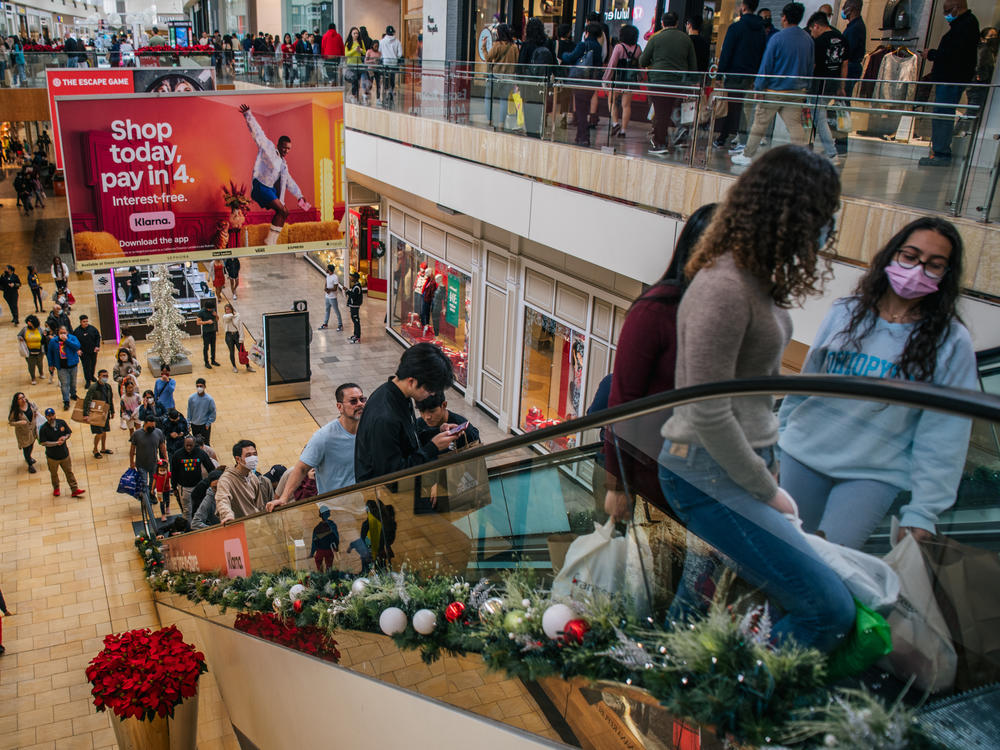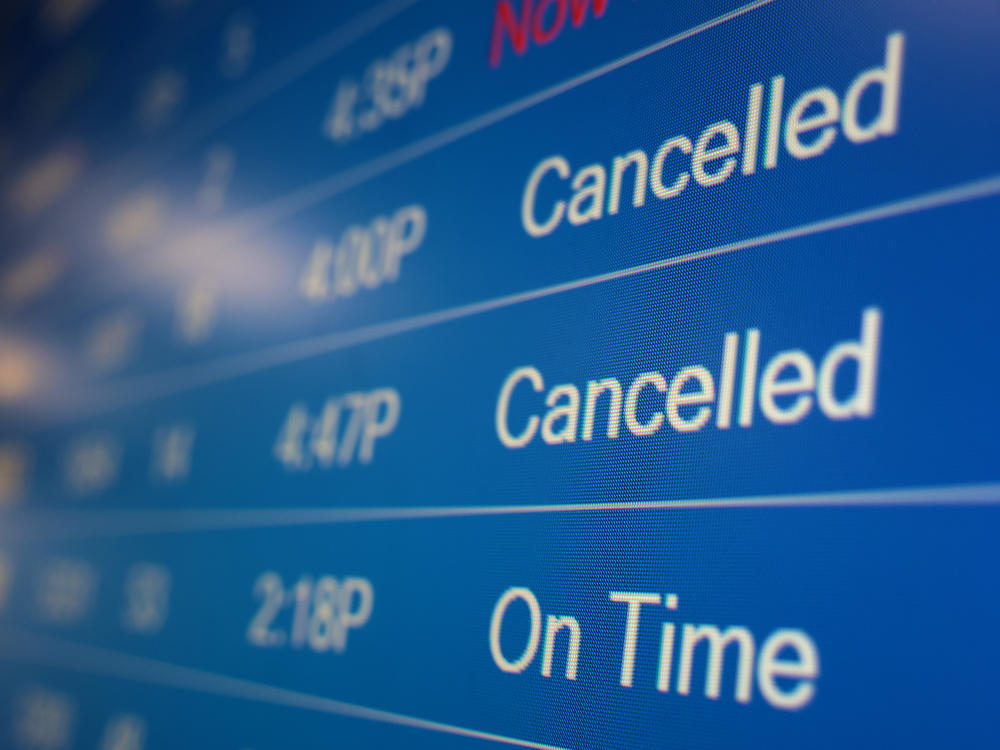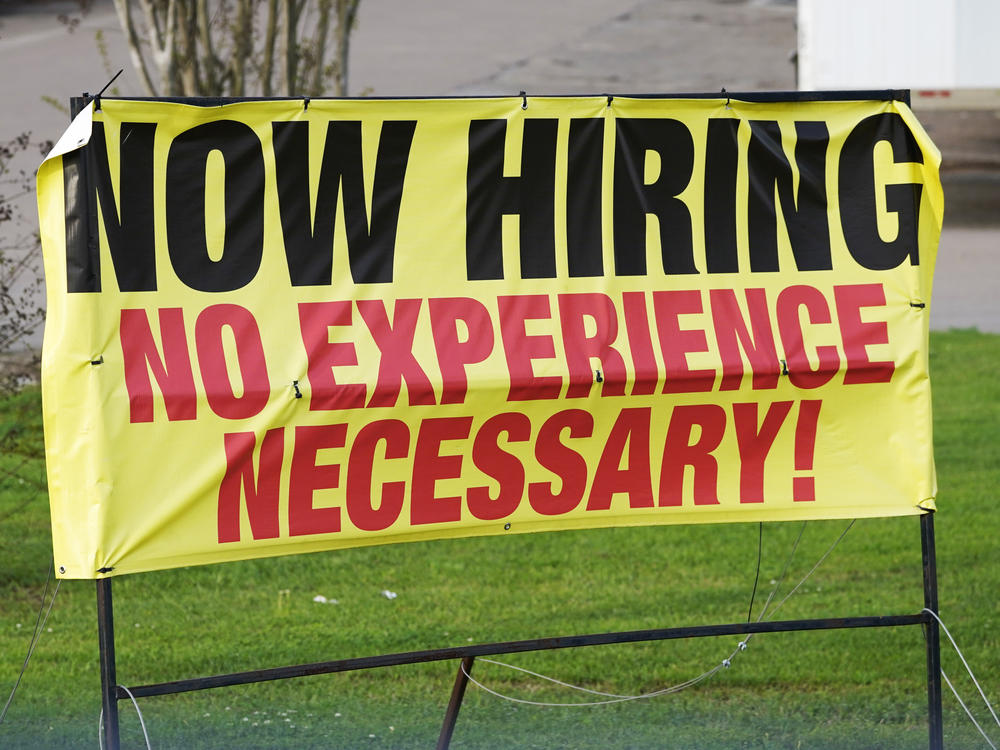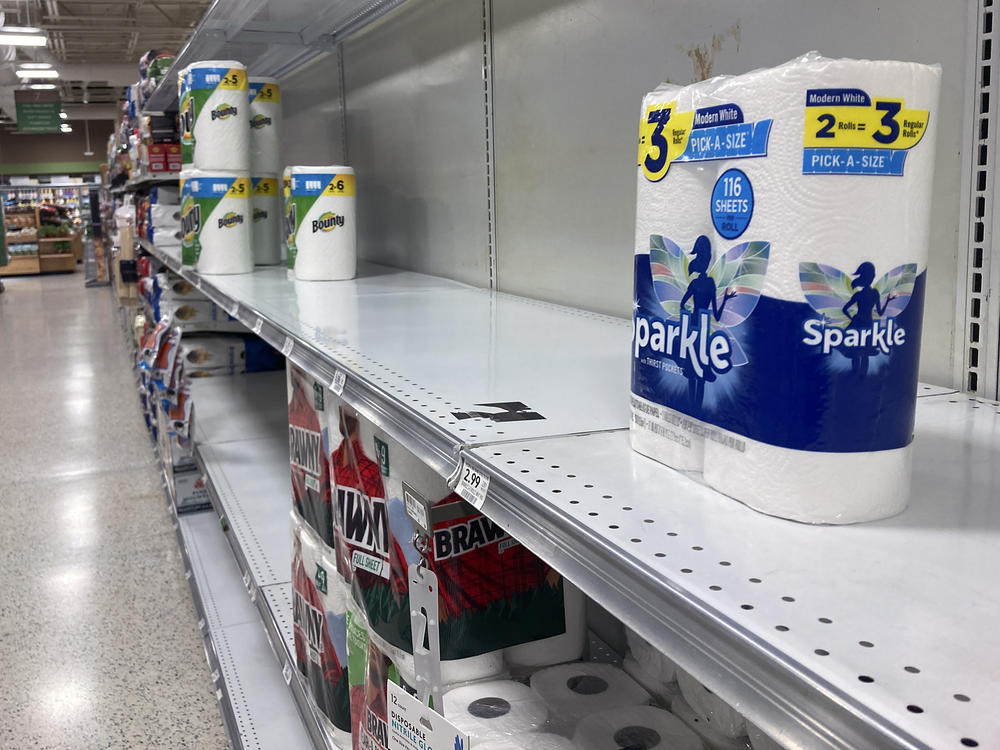Section Branding
Header Content
Believe it or not, the economy grew last year at the fastest pace since 1984
Primary Content
Last year saw the fastest economic growth since Ronald Reagan was president. But for many people, 2021 felt less like "Morning in America" and more like a restless night, dogged by fitful dreams about the ongoing pandemic.
The Commerce Department reported Thursday that the nation's gross domestic product grew 5.7% last year — the biggest increase since 1984. But the growth arrived in fits and starts, with hopes for a steady recovery repeatedly dashed by successive waves of infection.
And now, uncertainty continues in the year ahead, as the omicron variant continues to spread. Meanwhile, the Federal Reserve is gearing up to raise interest rates, perhaps aggressively, in an effort to combat stubbornly high inflation.
"It wasn't a straight line for the economy last year, for sure," said Mark Zandi, chief economist for Moody's Analytics. "The economy remains tethered to the pandemic."
Business last year boomed in the spring and early summer, as millions of Americans got vaccinated and felt free to travel and dine out more. In June and July alone, employers added more than 2 million jobs — nearly a third of the year's total job gains.
But growth slowed when the delta variant hit.
"It was crazy. It was a roller coaster," says Dave Krick, who owns three restaurants in Boise, Idaho.
Krick had high hopes for the end of the year, after a busy October, and he was making plans to resume hosting private parties in his restaurants, only to pull the plug when the infection rate started to soar again as the omicron variant started to spread.
"It was a teaser. We though the holiday season was going to be really good," Krick said. "Those holiday parties for us are a big part of making the year work. And we basically canceled it all."
An economic bang – and a whimper
The Commerce Department said GDP grew at an annual rate of 6.9% in the last three months of the year, thanks in part to stronger exports and a buildup of inventories.
But the fourth quarter was as uneven as the nine months that came before.
"Q4 started with a bang and ended with a whimper," said Zandi. "October was a fantastic month for the economy — consumer spending, investment — everything was kind of firing on all cylinders. And then by December, omicron came on the scene quickly and did a lot of damage."
While unemployment has dropped to just 3.9% — the lowest level since the start of the pandemic — employers added only 199,000 jobs in December.
And forecasters expect that weakness to continue into the beginning of the new year.
Initial claims for unemployment benefits in recent weeks suggest some employers are cutting jobs in response to the omicron wave.
Even though last year's economic growth was the strongest in decades, it fell short of what economists once hoped for. Following passage of the $1.9 trillion American Rescue Plan, some forecasters were predicting growth as high as 7%, fueled by widespread vaccinations and pent-up demand.
"There were just too many people who didn't get vaccinated," Zandi said. "It's admirable how well the economy did perform, despite the fact that vaccines didn't exactly solve the problem."
Pandemic-driven supply-chain problems and labor shortages weighed on economic growth, while also driving up prices.
"Even though we had a lot of demand, we weren't able to do as much with it as we had hoped," said Krick, the restaurant owner.
His labor costs have risen sharply this year, thanks to higher wages and new health benefits. The restaurant's food costs are up as well.
"Our supply chains don't like this roller coaster," Krick said. "We have a hard time predicting what we're going to get and not get, so we have to adjust quickly with menus and that takes a lot of our energy and time. And the costs are definitely difficult."
The price of restaurant meals nationwide was 6% higher in December than a year ago, while overall inflation reached 7% — the highest level since 1982.
Will 2022 be better?
The new year will likely continue to be marked by the path of the pandemic – as well as the fight against inflation.
The Federal Reserve signaled Wednesday that it plans to begin raising interest rates at its next meeting in March, in an effort to keep a lid on prices, and markets expect three additional rate hikes over the course of the year.
The central bank's challenge is not to hit the brakes too hard and slow the economy too much — a tricky feat considering some economists believe the central bank waited too long to tackle inflation.
"We do expect some softening in the economy from omicron, but we think that that should be temporary," Fed Chairman Jerome Powell told reporters. "We think the underlying strength of the economy should show though fairly quickly after that."
Zandi expressed confidence that the central bank could gradually withdraw its easy-money policies without stalling the recovery.
"I think they'll be able to do it and land the economic plane on the tarmac," he said. "It might be a little bumpy here. There's a lot of cross-winds in the economy."
Most of the federal relief programs that pumped trillions of dollars into people's pockets during the pandemic have also now expired, although restaurants are petitioning Congress for additional help.
Zandi thinks the economy will continue to expand in 2022, albeit at a slower pace of around 4%.
"All of us are getting better at kind of navigating the virus and learning how to live with it and manage through it," Zandi said. "Hopefully, we have another good year in 2022."
Krick is also hopeful that business will continue to rebound, but he's not making any firm predictions about the year ahead.
"One thing we know right now is we don't know what 2022 is going to bring us," he said. "We're bleeding a lot of cash, hoping that this spring and summer will be better, mainly because we don't have any choice. It's a weird time to be running a restaurant."
Copyright 2022 NPR. To see more, visit https://www.npr.org.




